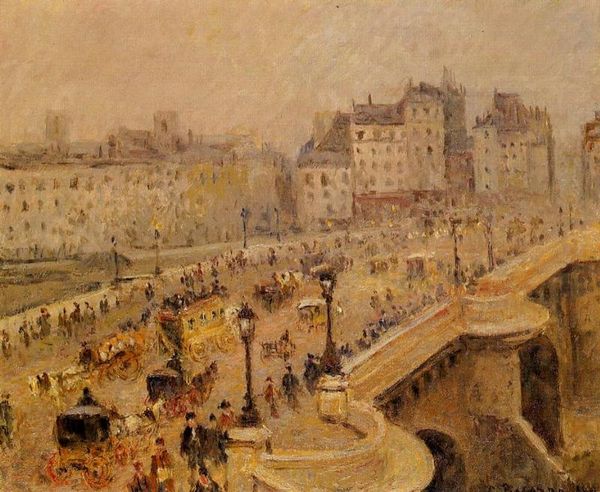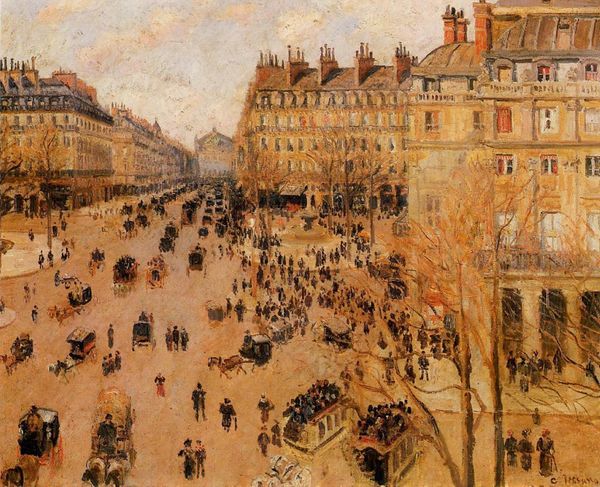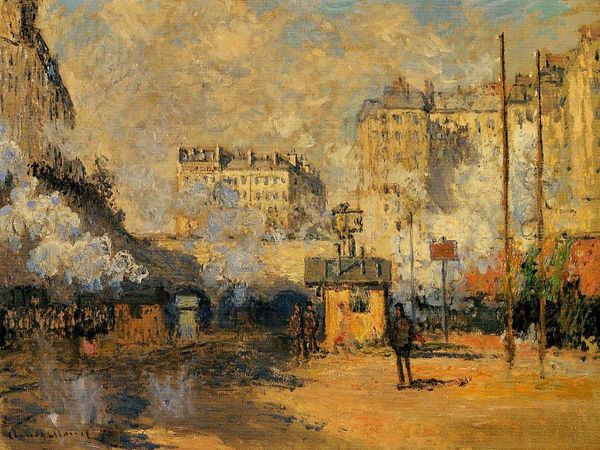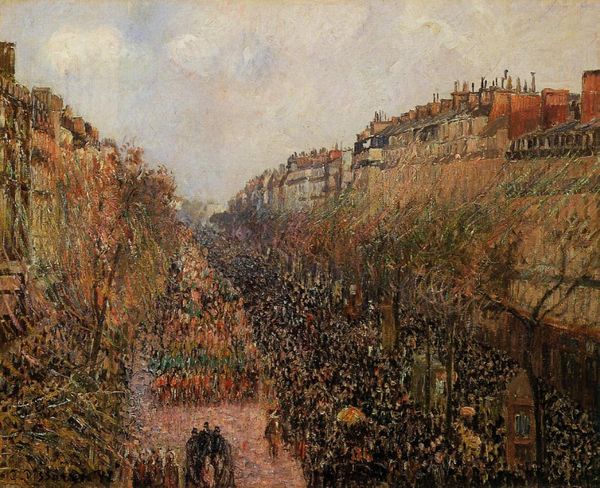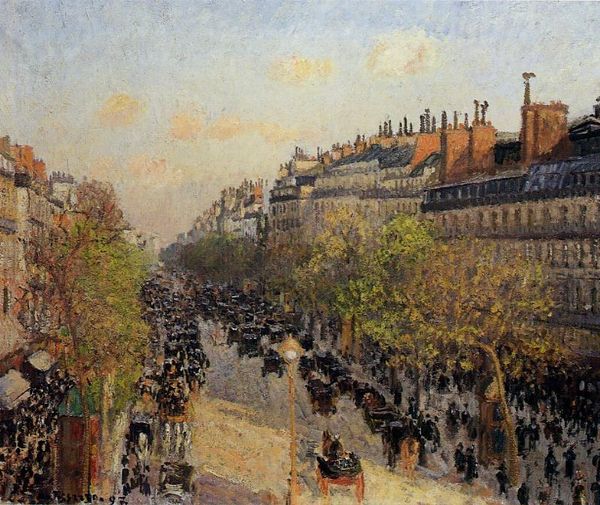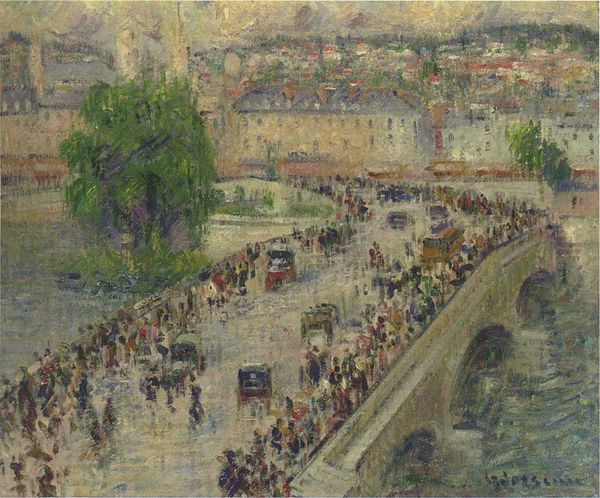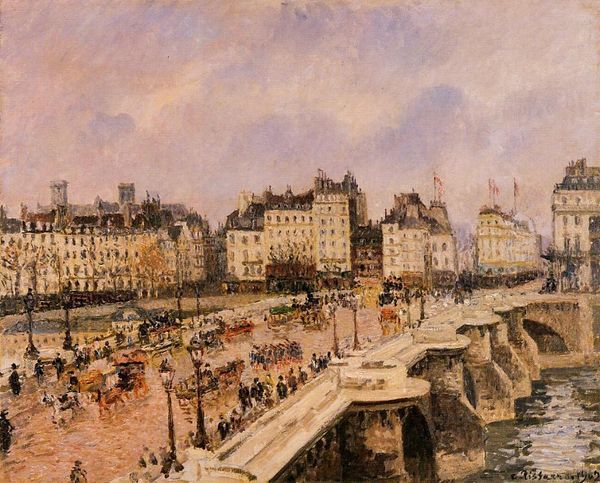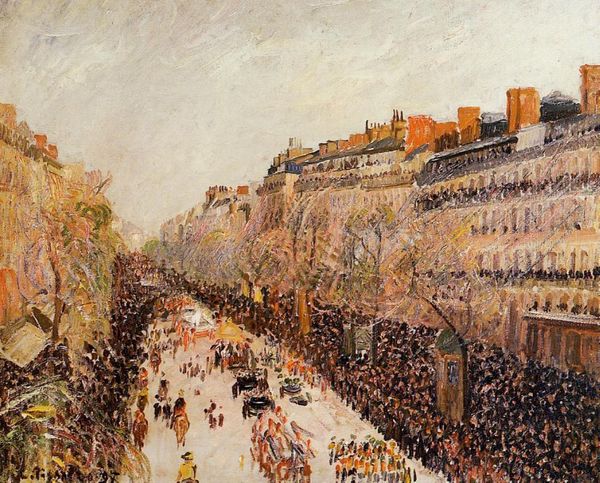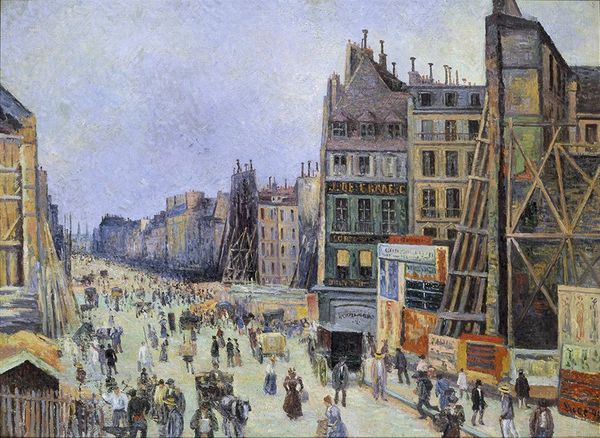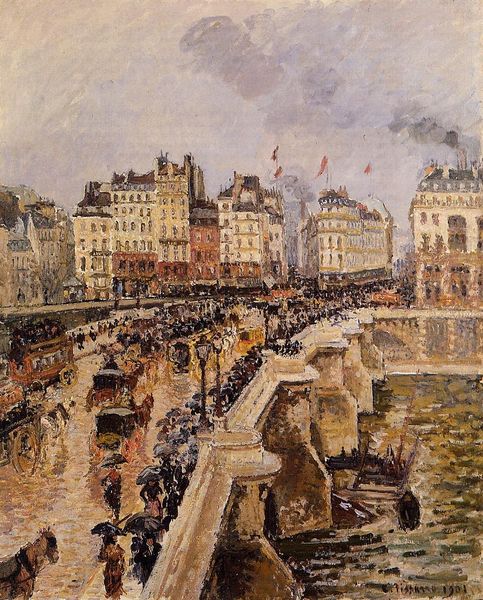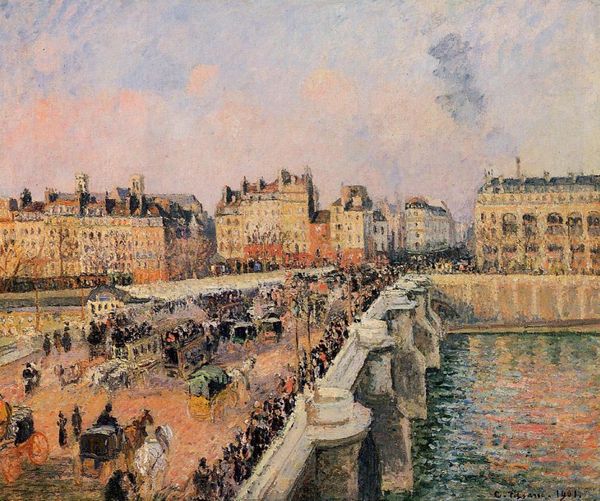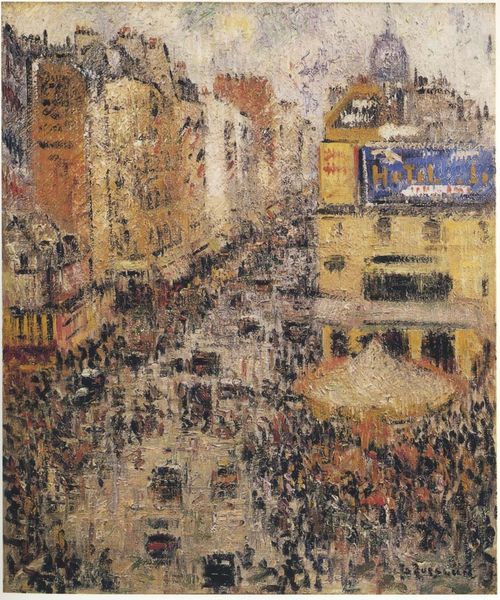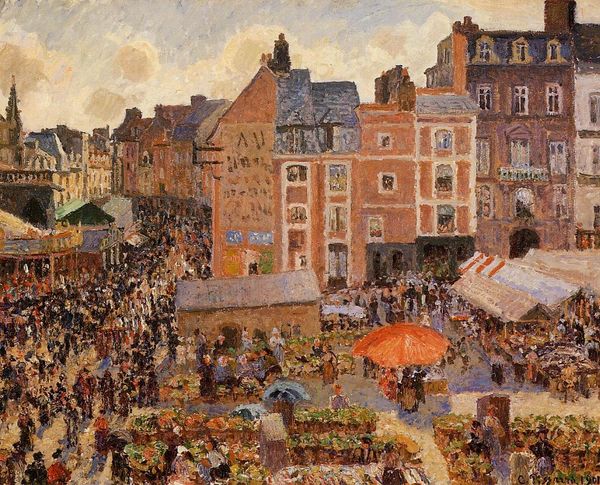
Dimensions: 54 x 64 cm
Copyright: Public domain
Curator: Welcome. We're standing before Camille Pissarro's "The Fishmarket, Dieppe," painted in 1902. He captured the vibrant activity of the market from an elevated perspective. Editor: It has a curiously muted palette, doesn't it? Predominantly browns, greys, creams, and the strokes are so thick. The buildings are all kind of fading together behind plumes of steam. The sheer volume of figures gives it a very dynamic but diffuse visual. Curator: Pissarro was part of the Impressionist movement, known for its capture of fleeting moments. I'm particularly drawn to the symbolism of the market. The market space, teeming with humanity, speaks to a deeply rooted, universal need for community and connection. Editor: Agreed, but I think its power also lies in how the structures contribute. Look how the vertical masts and buildings push our eye upward, against the low, horizontal throng of people, creating a kind of push-and-pull tension. The atmospheric perspective almost obscures the buildings in the background. Curator: I see a commentary on social activity in a time of immense change. Trains enter the visual narrative in this painting too, becoming symbols of modernity intruding upon tradition, even though the figures could just be milling around, their individual stories and interactions, echoing broader societal shifts. Editor: Yes, that is fair. I get something almost chaotic. Even though it’s ostensibly a cityscape, I can hardly see clearly delineated forms anywhere in the canvas because of how he built layers of small flecks. I keep coming back to this sensation of energetic visual clutter. Curator: Exactly. Pissarro masterfully orchestrates this chaotic scene, drawing our attention to both individual experiences and collective energies. The artist lets us feel how traditions transform in the face of progress, reminding us of cycles in our history and how society constantly reforms and remains the same. Editor: The materiality also has an odd resonance now – such a rough, built-up surface rendered in subdued hues is not really something that we usually see linked with Impressionism. Perhaps it signals the evolution away from pure observation, leaning towards conveying lived experience. Curator: I find it insightful to view "The Fishmarket, Dieppe," as a microcosm, the city transformed to art, expressing human culture and constant changes that echo through time. Editor: A final testament to the way technique, structure, and historical context combine to imbue a seemingly simple cityscape with a profound and complicated human story.
Comments
No comments
Be the first to comment and join the conversation on the ultimate creative platform.
